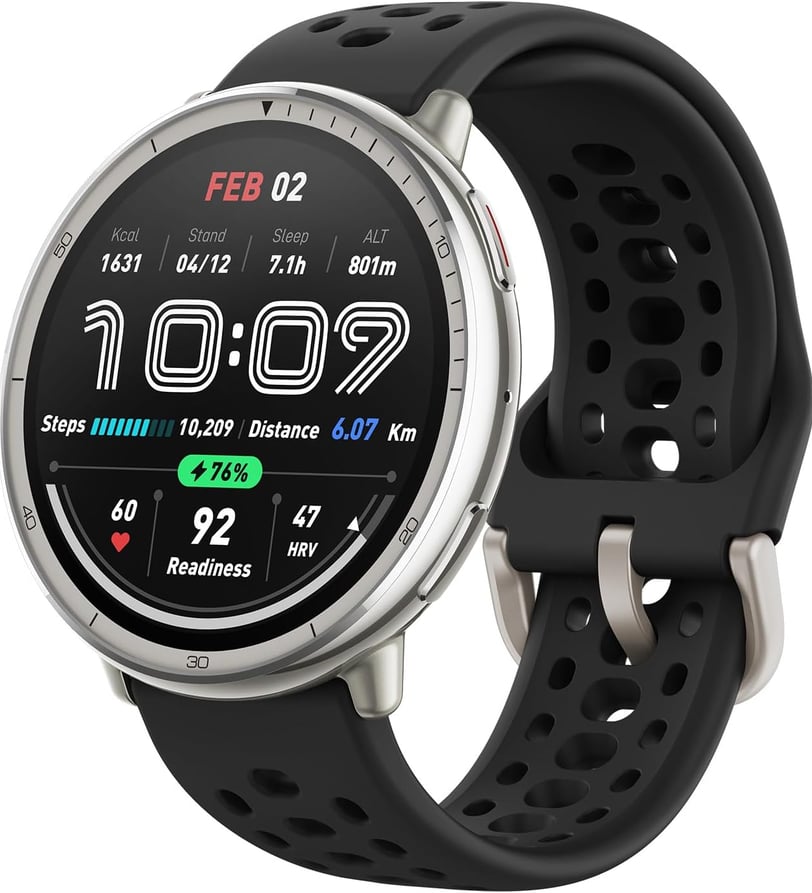Elevate Your Ruck Training: How a GPS Watch Can Transform Your Performance
6/27/20255 min read


The Benefits of Using a GPS Watch for Ruck Training
In the domain of ruck training, athletes constantly seek ways to enhance their performance and monitor their progress. A GPS watch emerges as an invaluable tool, offering numerous benefits that can significantly improve training outcomes. One of the primary advantages of utilizing a GPS watch is its capability to accurately track vital metrics, including distance traveled, pace, elevation gain, and heart rate. This real-time feedback empowers ruck trainers to assess their performance instantly, enabling them to make data-driven decisions during their workouts.
Furthermore, the ability to track distance and pace helps individuals establish specific training goals and modify their routines accordingly. For instance, if a trainee notices a decline in pace over time, they can adapt their training regimen to include interval work or hill sprints, effectively addressing identified weaknesses. Elevation tracking also assists ruck trainers in simulating various terrains, which is critical for those preparing for demanding physical conditions. Understanding how one's body responds to different elevations can greatly aid in strategizing for various rucking challenges.
Another significant benefit of a GPS watch lies in its role in motivation and accountability. By consistently monitoring training data, ruck trainers can visualize their progress over time, which can be an essential factor in maintaining dedication. When individuals observe their improvement in metrics such as distance covered and heart rate zones, they are often encouraged to push beyond their limits. This consistent data tracking not only fuels motivation but boosts accountability, as athletes can easily share their achievements with training partners or on social platforms.
Overall, a GPS watch transcends the role of a mere accessory, acting instead as a dedicated partner in a ruck trainer's journey to achieve fitness goals. With the myriad of benefits it offers, incorporating a GPS watch into ruck training can significantly elevate performance and foster long-term success.
Key Features to Look for in a GPS Watch
When considering a GPS watch for rucking, several critical features should be prioritized to enhance performance and training efficiency. First and foremost is battery life. A strong battery performance is essential, particularly for long-duration rucking sessions. Ideally, look for a GPS watch that offers multi-day functionality without the need for frequent recharging, ensuring uninterrupted tracking during extended activities.
Next is water resistance. Given that rucking can occur in various weather conditions, a watch with a high water resistance rating (at least 5 ATM) is recommended. This feature will protect the device from moisture and allow ruckers to engage in their workouts regardless of rain or sweat. This durability extends the lifespan of the device and ensures that it remains functional over time.
Accuracy in GPS tracking is another vital aspect to consider. A quality GPS watch should provide precise distance, pace, and route tracking, which is particularly beneficial for ruckers monitoring their performance. Look for models equipped with advanced GPS technology that minimizes drift and enhances satellite connectivity, resulting in more reliable readings.
Heart rate monitoring capabilities are also significant. Integrated heart rate sensors enable ruckers to assess their exertion levels and ensure they stay within their desired training zones. This feature contributes to optimizing workouts and improving overall fitness performance.
Lastly, compatibility with fitness apps can greatly enhance user experience by allowing for detailed analysis of training data. Many watches can sync with popular fitness platforms, enabling ruckers to set goals, track progress, and share achievements with a community. Evaluating these key features will help in selecting the perfect GPS watch tailored to individual training needs, thus making an informed investment towards enhancing rucking proficiency.
Interpreting Your Data: Making Sense of Your Metrics
Utilizing a GPS watch during ruck training provides athletes with a wealth of data that can be instrumental in enhancing performance. Understanding the significance of collected metrics is crucial for effective training. Among the primary metrics available, pace, elevation gain, and heart rate stand out as key indicators of overall performance and fitness progress.
Pace, typically measured in minutes per mile or kilometer, offers insight into how quickly you are completing your ruck sessions. Monitoring your pace over time allows you to identify trends and make necessary adjustments to your training regimen. For instance, if significant fluctuations in your pace are noted, it may indicate fatigue or an opportunity to diversify your workout intensity through speed training or endurance drills.
Elevation gain is another critical metric that sheds light on the challenges faced during training. Rucking on varied terrain increases the difficulty level and enhances muscle strength and cardiovascular endurance. By tracking elevation gain, you can gauge your adaptability to incline challenges and adjust your routes or resistance levels accordingly, ultimately optimizing your ruck training sessions.
Heart rate is pivotal for understanding the cardiovascular exertion associated with your training efforts. Monitoring heart rate responses during ruck sessions is essential for establishing an appropriate intensity level. By analyzing the data, you can determine whether your training is falling into the desired aerobic or anaerobic zones. This understanding can help you maintain a safe training threshold and optimize the energy expenditure needed to reach personal goals.
Incorporating these metrics into your training analysis allows you to fine-tune your ruck workouts effectively. By recognizing patterns and adapting your training plans based on data insights, you can systematically improve your performance and set realistic, achievable training goals.
Using Data to Optimize Your Ruck Workouts
To maximize the benefits of your ruck training, utilizing the data provided by a GPS watch is essential. These devices can track various metrics, such as distance covered, elevation gain, pace, and your heart rate zones. By analyzing this information, ruckers can set realistic goals and tailor their training programs to meet these objectives effectively.
One effective approach is to base your goals on the distance and pace data. For example, if your objective is to increase endurance, you might aim to gradually extend the distance of your ruck workouts each week. Start by determining a baseline distance that you can comfortably complete and progressively increase it as your fitness improves. By doing so, you avoid overexertion and injury, while still pushing your limits. Similarly, utilize pace feedback to identify a comfortable speed, then work on decreasing this time as you become fitter.
Heart rate training is another key aspect of optimizing your ruck workouts. Many GPS watches offer built-in heart rate monitoring capabilities, allowing you to train within specific heart rate zones. By identifying your maximum heart rate, you can establish target zones for different training sessions. For instance, a moderate heart rate zone is ideal for endurance training, while higher zones are more suitable for intense conditioning. This data-driven approach ensures that you are training efficiently and effectively based on your current fitness level.
Consistency is crucial in any training regimen. Use your GPS watch to track your workouts and visualize your progress over time. Setting regular reminders for ruck sessions and establishing a routine can help to maintain motivation. Additionally, consider sharing your accomplishments with friends or through social media, which can encourage accountability. With the data at your fingertips, you are well-equipped to make informed adjustments to your program, ultimately enhancing your performance and achieving your ruck training goals.
